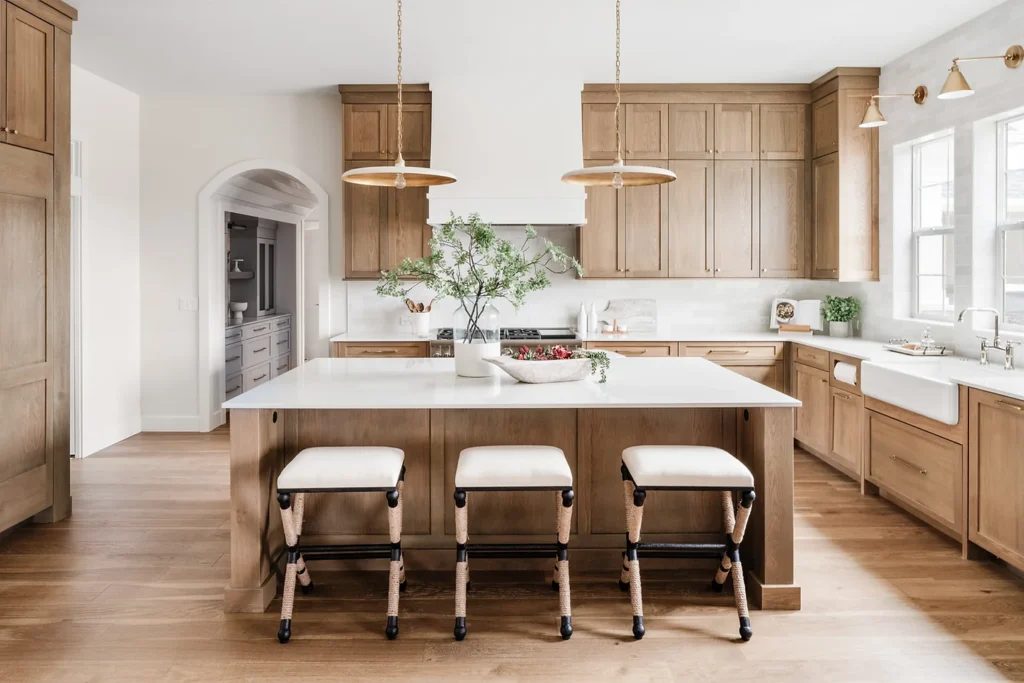Natural wood kitchen cabinets have experienced a remarkable resurgence in contemporary home design, transcending their traditional roots to become a cornerstone of modern interior aesthetics.
The inherent versatility and quintessential charm of natural wood cabinets create an ineffable connection between functionality and aesthetic appeal, making them an exemplary choice for homeowners seeking to infuse their culinary spaces with warmth and character.
From the rich, chromatic variations found in different wood species to the distinctive grain patterns that tell a unique story, these cabinets serve as more than mere storage solutions – they are artistic expressions that transform everyday kitchen experiences.
In today’s design landscape, where sustainability and authenticity are increasingly valued, natural wood cabinets stand as a testament to enduring craftsmanship while offering remarkable durability and adaptability to various design schemes.
Natural Wood Kitchen Cabinets
Whether you’re planning a complete kitchen renovation or simply seeking inspiration for your dream space, exploring the world of natural wood cabinets reveals a spectrum of possibilities that can elevate your kitchen’s ambiance while maintaining its functional integrity.
1. Classic Oak Cabinets
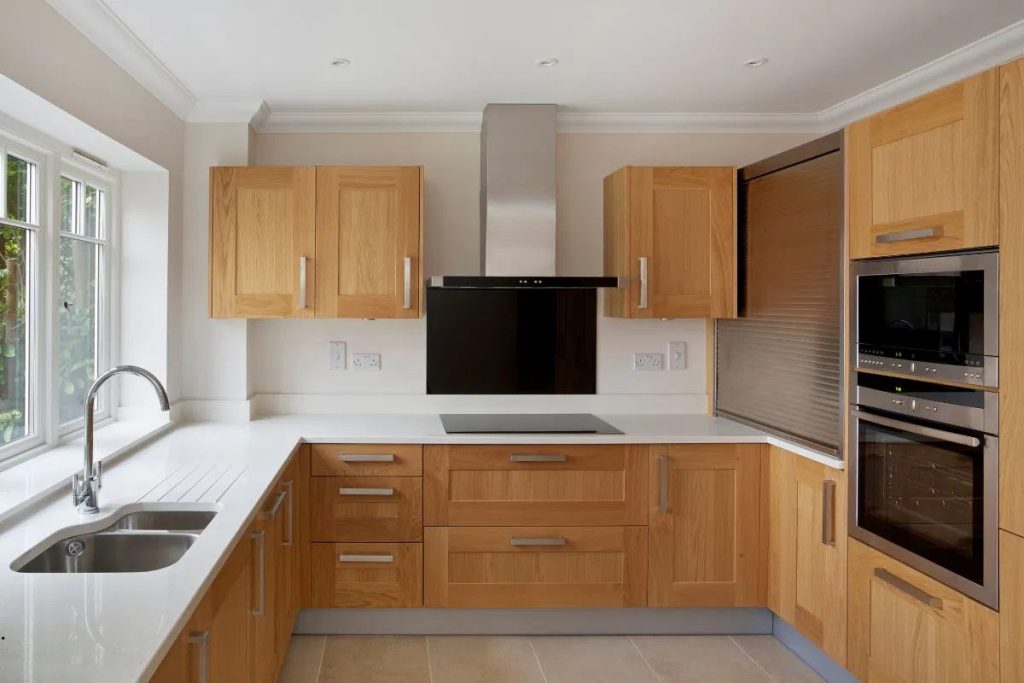
Oak cabinets remain a timeless choice in kitchen design, celebrated for their remarkable durability and distinctive grain patterns. The natural honey-golden hue of oak adds warmth to any kitchen space, while its robust structure ensures longevity even in high-traffic cooking environments. The prominent grain patterns create visual interest and help mask minor wear and tear, making them particularly suitable for busy family kitchens.
Oak’s versatility extends beyond its natural appearance, as it accepts stains and finishes exceptionally well, allowing homeowners to customize the look while maintaining the wood’s inherent character. Whether left in its natural state or enhanced with a light stain, oak cabinets can complement both traditional and contemporary kitchen designs, making them a reliable choice for various interior styles.
2. Rich Cherry Wood
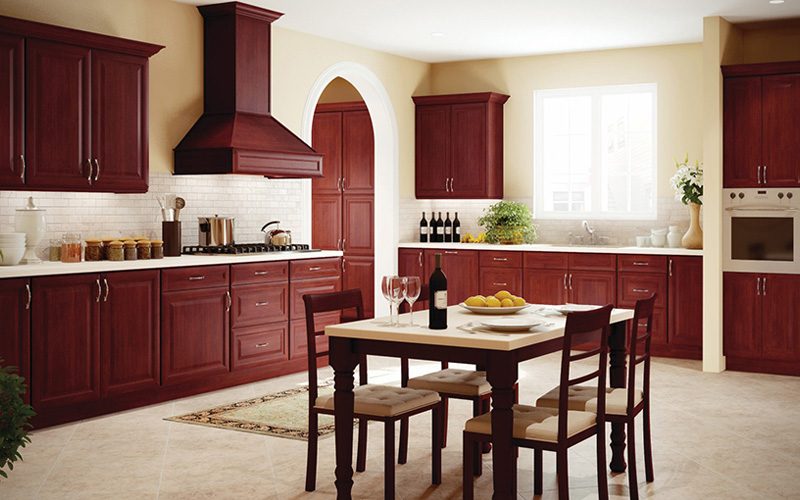
Cherry wood cabinets are renowned for their sophisticated appearance and natural color evolution over time. Initially presenting a light pinkish-brown hue, cherry wood gradually deepens to a rich, warm reddish-brown tone that becomes more pronounced with exposure to light and age, creating a living, breathing element in your kitchen space.
The smooth, fine grain pattern of cherry wood offers a more subtle and refined appearance compared to oak, making it particularly appealing in upscale kitchen designs. The wood’s natural luster and ability to accept different finishes make it an excellent choice for homeowners seeking a balance between elegance and durability, while its consistent grain pattern provides a clean, cohesive look throughout the kitchen.
Related Guide: 12 Alder Wood Kitchen Cabinets
3. Elegant Maple Cabinets
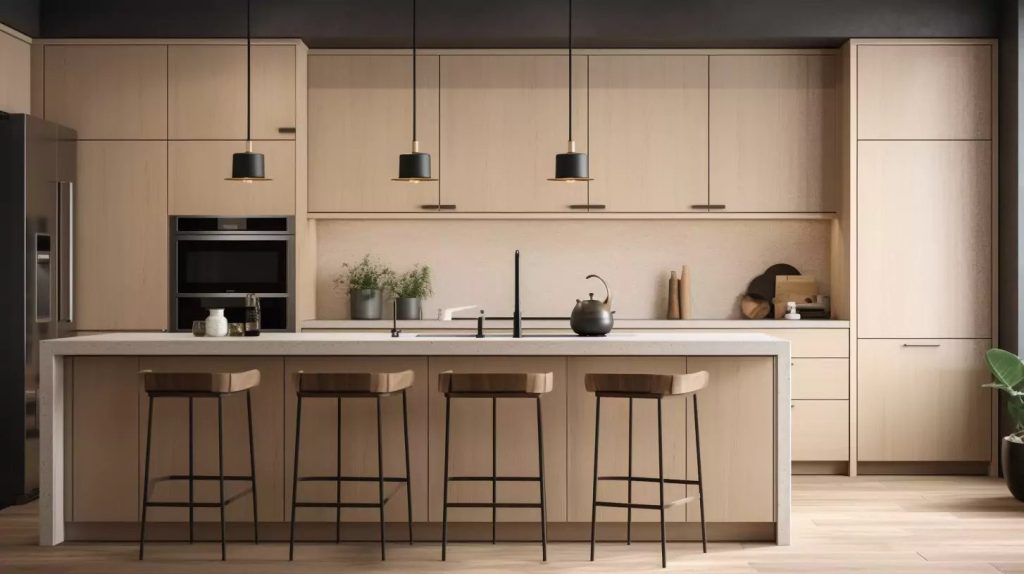
Maple cabinets exemplify versatility in kitchen design, offering a clean, uniform appearance that serves as an ideal canvas for various design styles. The wood’s naturally light color and subtle grain pattern create a bright, airy feeling in the kitchen, while its dense structure ensures excellent durability and resistance to wear.
These cabinets particularly excel in contemporary and transitional kitchen designs, where their smooth surface and consistent coloration can be enhanced with different finishes to achieve desired aesthetics. From clear coats that preserve maple’s natural beauty to dark stains that transform its appearance, maple cabinets provide endless possibilities for customization while maintaining their structural integrity.
4. Rustic Pine Cabinets
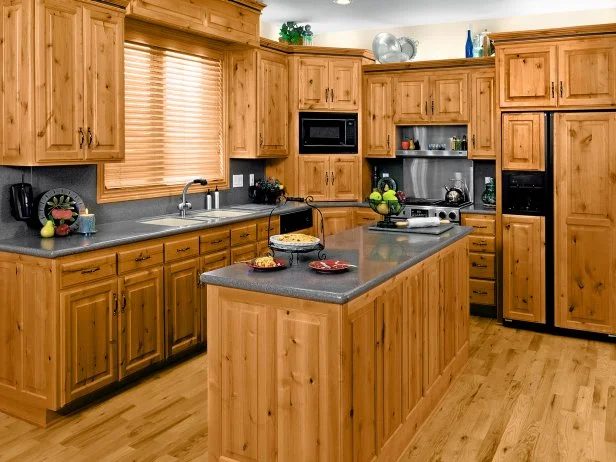
Pine cabinets bring a casual, country charm to kitchen spaces with their distinctive knotty appearance and light, welcoming color. The wood’s natural characteristics, including its prominent knots and grain patterns, create a rustic aesthetic that’s perfect for farmhouse-style or cottage-inspired kitchens.
While softer than hardwoods like oak or maple, pine develops a beautiful patina over time, adding character to your kitchen. Its ability to take stains well allows for various finish options, from light natural tones that brighten the space to darker hues that emphasize the wood’s rustic qualities.
5. Exotic Teak Cabinets
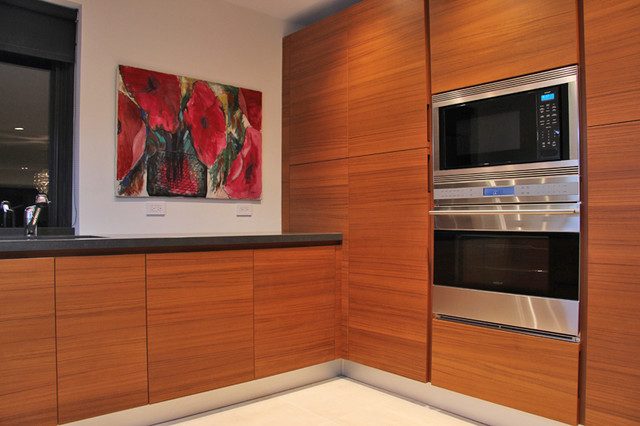
Teak cabinets represent luxury in kitchen design, known for their exceptional durability and natural resistance to moisture and decay. The wood’s rich, golden-brown color and straight grain pattern create a sophisticated appearance that ages beautifully over time.
The natural oils present in teak make it particularly suitable for kitchen environments, where exposure to moisture and temperature changes is common. While requiring a higher initial investment, teak cabinets offer outstanding longevity and maintain their appearance with minimal maintenance, making them a valuable long-term investment for discerning homeowners.
6. Sustainable Bamboo Cabinets
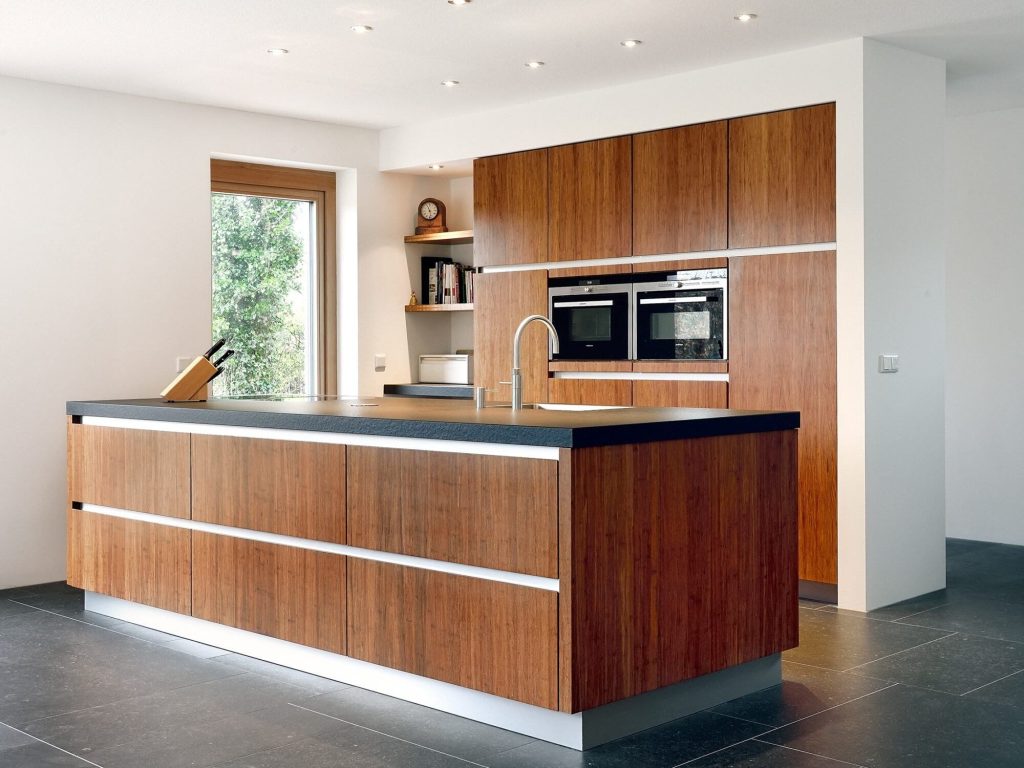
Bamboo cabinets offer an eco-friendly alternative to traditional hardwood options, combining environmental consciousness with modern aesthetics. Despite technically being a grass, bamboo provides remarkable durability comparable to many hardwoods while offering a unique, contemporary appearance with its distinctive grain patterns.
The material’s rapid growth rate and renewable nature make it an excellent choice for environmentally conscious homeowners. Bamboo cabinets typically feature a light, clean appearance that works particularly well in modern and minimalist kitchen designs, while various finishing options allow for customization to match different color schemes.
7. Traditional Walnut Cabinets
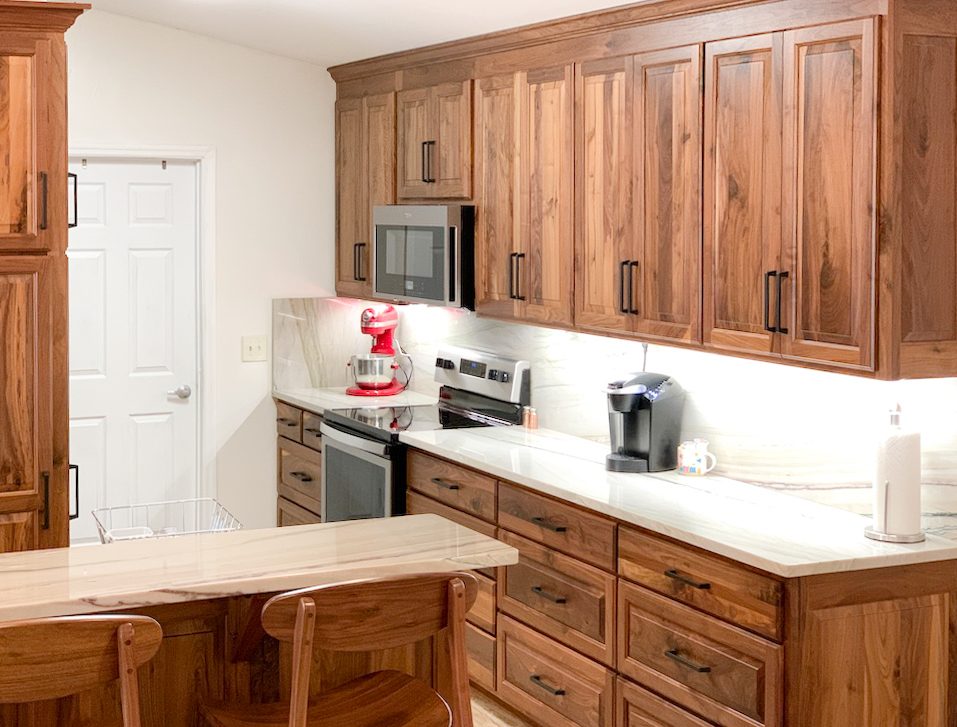
Walnut cabinets bring sophistication and drama to kitchen spaces with their naturally dark, rich coloring and impressive grain patterns. The wood’s chocolate-brown tones create a striking visual impact while providing a warm, inviting atmosphere that suits both traditional and contemporary kitchen designs.
The natural variation in walnut’s color and grain makes each cabinet unique, adding character and depth to the kitchen. Despite being softer than some hardwoods, walnut’s stability and resistance to warping make it an excellent choice for kitchen cabinetry, particularly in designs where visual impact is a priority.
8. Distinctive Hickory Cabinets
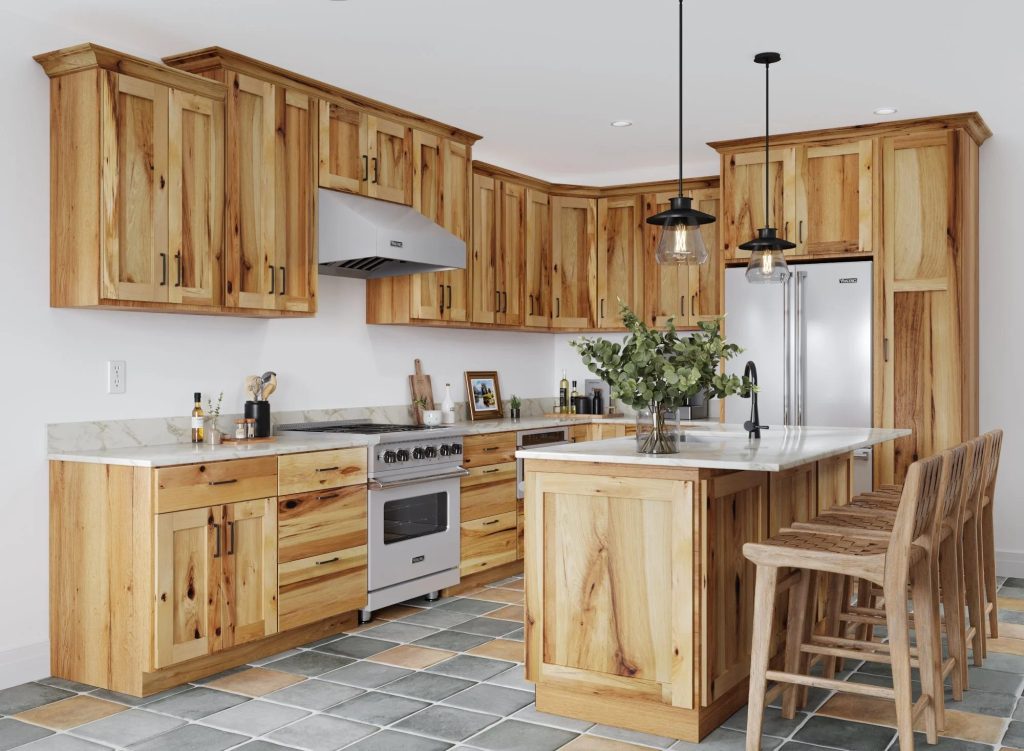
Hickory cabinets stand out for their dramatic grain patterns and exceptional durability, making them perfect for kitchens that demand both visual interest and long-term reliability. The wood’s natural color variations, ranging from light cream to rich brown, create dynamic visual effects that become focal points in kitchen design.
This hardwood’s incredible strength makes it ideal for high-use environments, while its distinctive appearance adds rustic charm or contemporary flair depending on the chosen finish. Hickory cabinets are particularly suited to designs that celebrate natural wood characteristics and can withstand the rigors of daily kitchen use.
9. Ash Wood Cabinets

Ash wood cabinets offer a compelling combination of strength and visual appeal, featuring a light color palette similar to oak but with a more consistent grain pattern. The wood’s excellent shock resistance and flexibility make it an ideal choice for kitchen cabinetry that needs to withstand daily use.
These cabinets accept stains exceptionally well, allowing for a wide range of finish options while maintaining the wood’s natural beauty. The light coloration of ash can help create an open, airy feeling in the kitchen, while its durability ensures long-lasting performance.
Related Guide: 15 Dark Wood Kitchen Cabinets
10. Reclaimed Wood Cabinets
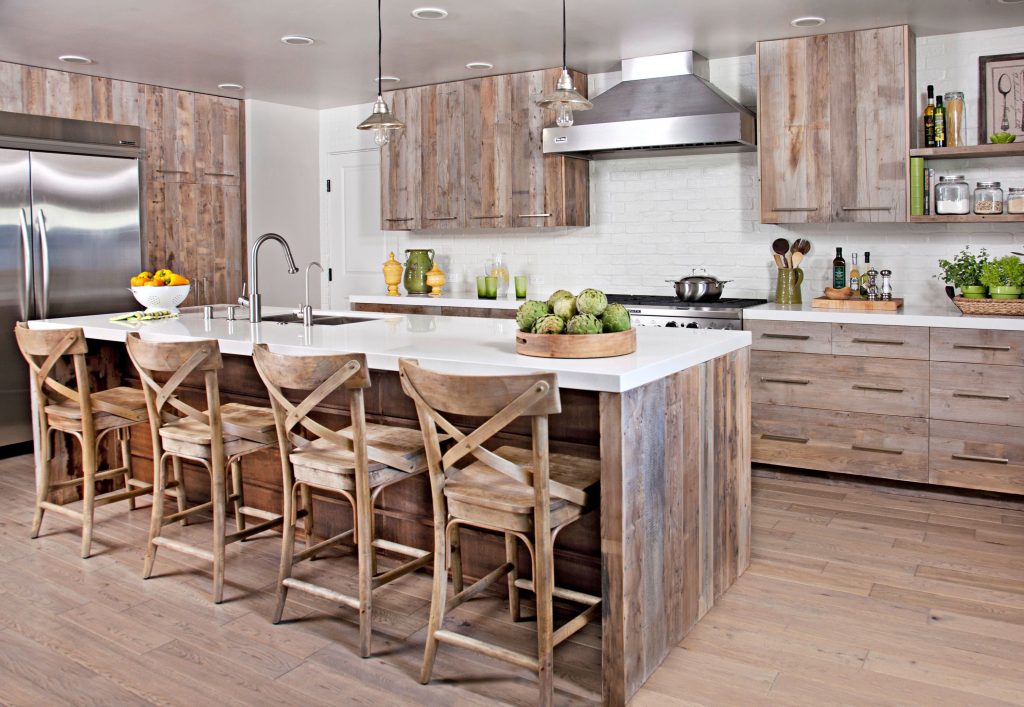
Reclaimed wood cabinets bring history and environmental consciousness to kitchen design, featuring wood salvaged from old buildings, barns, or other structures. Each piece tells a unique story through its patina, wear patterns, and character marks, creating truly one-of-a-kind kitchen spaces.
The aged appearance and natural imperfections of reclaimed wood add authentic character to kitchen designs, particularly suited to rustic, industrial, or eclectic styles. While requiring careful selection and preparation, these cabinets offer unmatched character and environmental benefits.
11. Birch Wood Cabinets
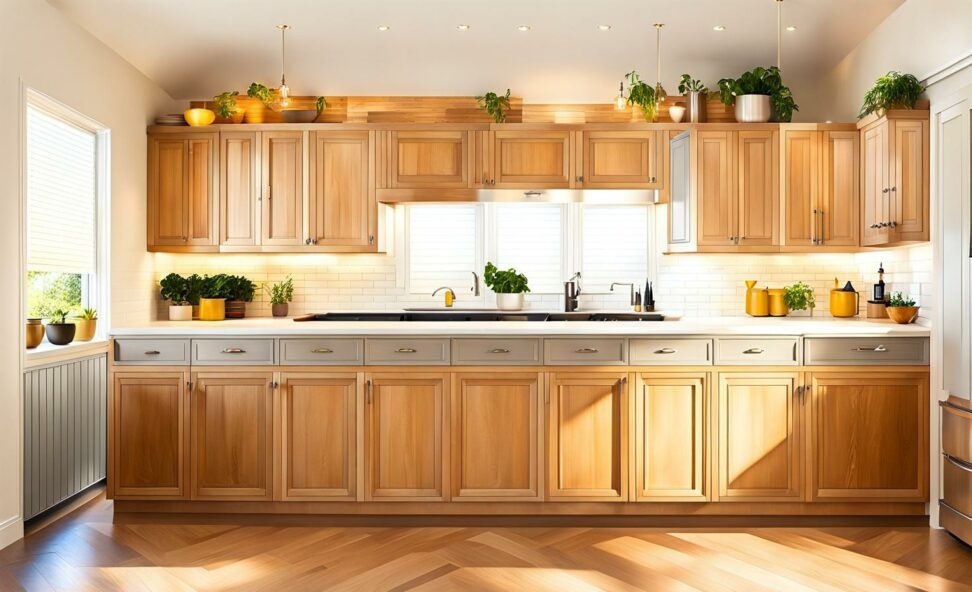
Birch cabinets provide an economical yet attractive option for kitchen design, offering a light color palette and smooth grain pattern that accepts stains beautifully. The wood’s fine, uniform texture creates a clean appearance that works well in various kitchen styles.
While softer than some hardwoods, birch offers good durability for its price point and can be finished to mimic more expensive woods. Its light color and subtle grain make it particularly suitable for smaller kitchens where darker woods might feel overwhelming.
12. White Oak Cabinets
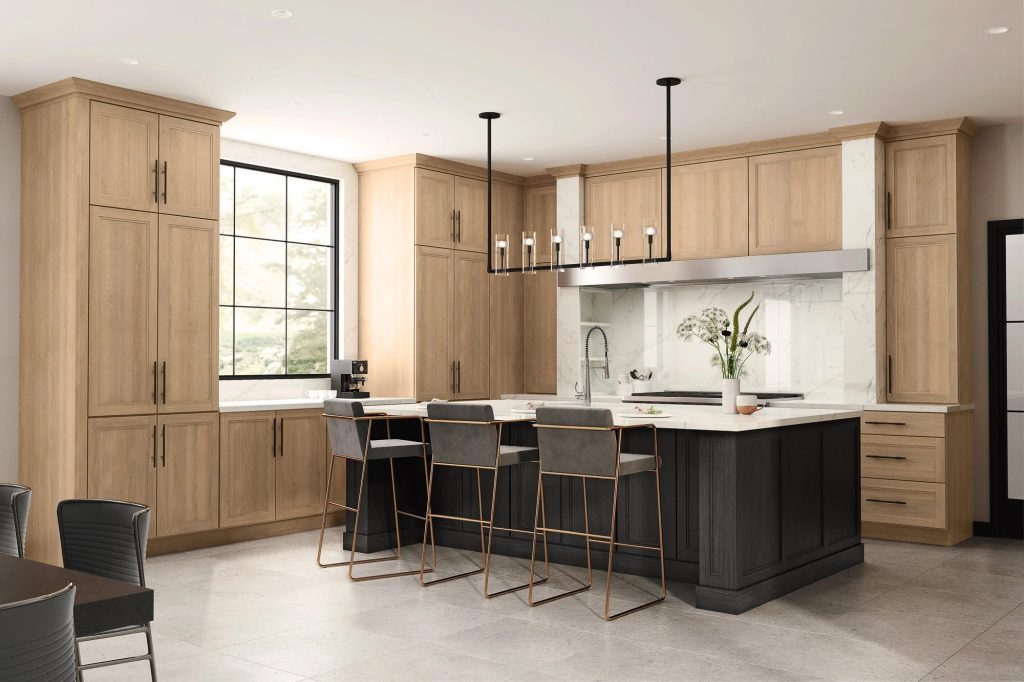
White oak cabinets differ from their red oak counterparts with a more subtle grain pattern and greater resistance to moisture. The wood’s natural light brown to gray coloring provides a contemporary feel while maintaining the durability oak is known for.
These cabinets excel in modern and transitional kitchen designs, where their clean lines and understated grain patterns create sophisticated, timeless appeal. White oak’s superior moisture resistance makes it particularly suitable for kitchen environments.
13. Alder Wood Cabinets
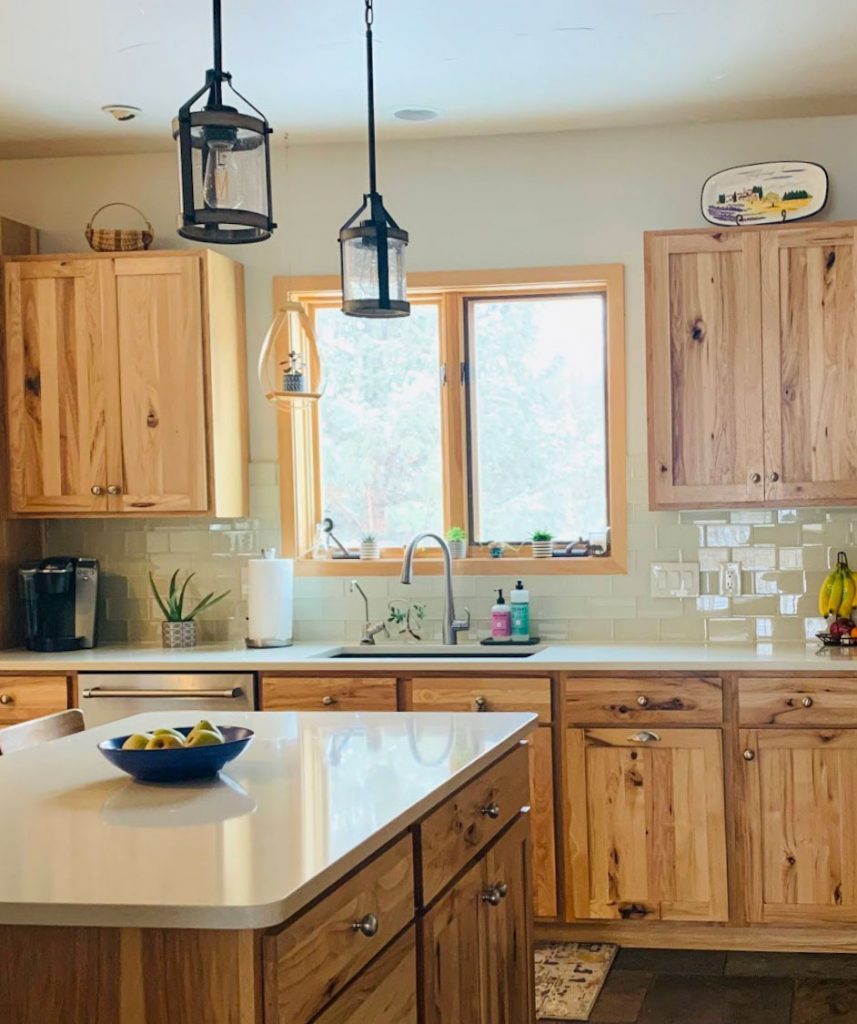
Alder cabinets offer a softer, more affordable alternative to cherry wood, featuring a straight grain pattern and warm, reddish-brown coloring. The wood’s knots and natural characteristics can add rustic charm or be minimized through careful selection for a more refined appearance.
While softer than many hardwoods, alder accepts finishes exceptionally well and can be stained to mimic more expensive woods. Its natural warmth and character make it particularly suitable for traditional and transitional kitchen designs.
Conclusion
Natural wood kitchen cabinets continue to captivate homeowners with their timeless appeal, durability, and versatility in design applications. From the classic elegance of cherry and walnut to the eco-friendly innovation of bamboo and reclaimed wood, each option brings unique characteristics and benefits to kitchen design.
The choice of natural wood cabinets represents more than just a functional decision – it’s an investment in lasting beauty and quality that can transform an ordinary kitchen into an extraordinary living space.
As we embrace sustainable living and seek authentic materials in our homes, natural wood cabinets stand as a testament to the enduring appeal of natural materials in contemporary design, offering solutions that are both beautiful and practical for today’s lifestyles.

